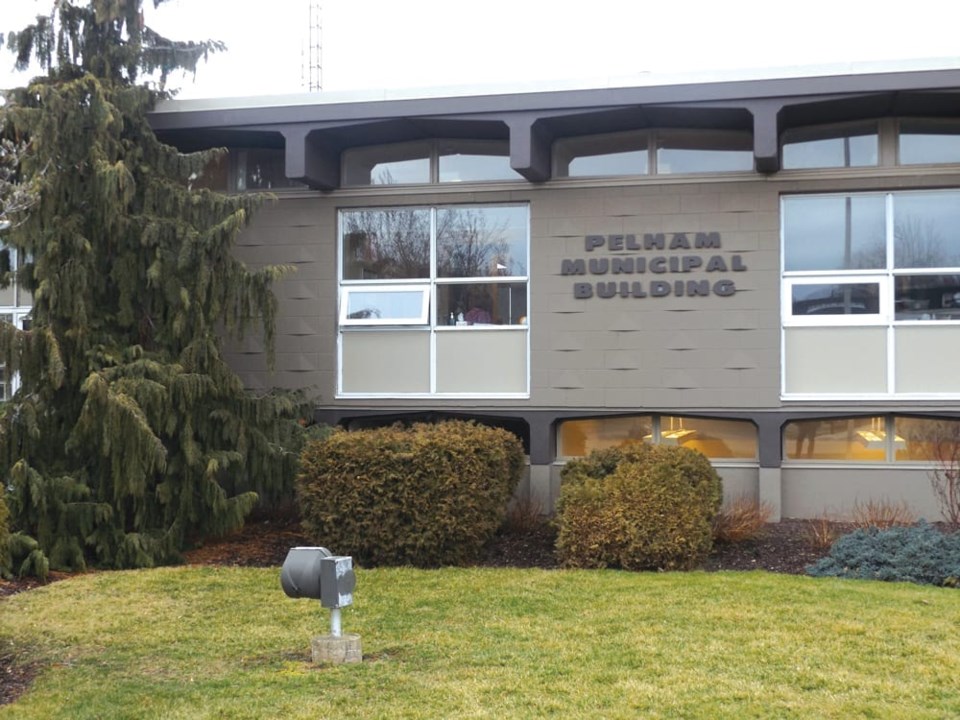BY VOICE STAFF The ten or so interested citizens who attended last week’s Town Council meeting to observe discussion on two matters near Hurricane Road must have been initially pleased when it was arranged that their issue be moved to earlier on the agenda. However, 45 minutes in on CAO Darren Ottaway’s extended presentation on East Fonthill (story on page 1), their faces displayed considerably less enthusiasm.
Ottaway eventually ceded the podium after nearly an hour, and following a brief—though poignant—presentation on Alzheimer’s disease, Hurricane’s issues came to the floor.
Harland Young, the president of Carriage Hill condominiums, spoke to Council regarding a report on flooding that had been received at the August 21 meeting.
“I want to take this opportunity to restate the need that this project proceeds as soon as possible,” Young said, as pictures from 2014 showing a vast river bisecting Pelham Street at Hurricane were projected on the screen.
The water, according to Young, finally drained into Carriage Hill’s property, as well as into other basements along the street. After this incident, Young presented to Council, requesting that action be taken in the 2015 budget to remedy the matter. This action, according to Young, was carried out in 2015, but has only reduced the quantity of water.
“It is believed that we have not had as severe a rainstorm as those experienced in the spring of 2014,” he said. “The need [for action] remains.”
Residents of Carriage Hill have been pleased to see regular progress on the project, including the installation of a sidewalk on the east side of Pelham Street, as well as extensive geotechnical surveys. But, as Young continued, residents wanted to again urge council that the entirety of the project be included in the 2018 budget.
The Public Works report received by Council on August 21 stated that the cost for this undertaking would be close to $1.5 million, and that one way to manage this amount would be to split the project over two years. The matter will be decided during the 2018 budget consideration.
“We have been patient,” Young said. “We’ve been keeping the [condo] owners up-to-date, and the confidence that we’ve instilled in them has stopped you from getting nuisance calls.”
After discussion concluded, Young and several Carriage Hill residents were free to leave, but those there for the other Hurricane Road issue—traffic—had to wait a little longer.
Council first considered a request for development charge relief for 1145 Pelham Street. Mike Hassani, the property owner, was issued a permit to demolish the previous building in 2011. Typically, when a building is demolished to make way for new construction, the developer is issued a relief from the development charges based on the size of the old building—in Hassani’s case, a relief worth some $47,600. But in order to receive this rebate, the building application must be submitted within five years of the demolition permit. Hassani missed this deadline by 35 days.
Pelham’s Department of Community Planning and Development suggested that Council “may wish to consider” offering the relief because Hassani’s planned three-story, mixed-use development “will provide employment opportunities, residential housing options and taxation over the long term which will benefit the community.”
Some members of Council were initially skeptical. Councillor Rybiak expressed concerns that Hassani had missed the “generous time provided,” and wondered if it were wise to make an exception in this one situation. Town Director of Planning Barb Wiens conceded that voting in favour of Hassani could be setting a precedent.
“I’m kind of in a quandary,” said Councillor Junkin. At first, he had thought that the relief was warranted, but then was likewise troubled by the possibility of setting precedent. “If five years isn't enough, then is it six years, or is it seven years?”
Councillor Papp asked whether there were any special circumstances that had delayed Hassani’s efforts.
Upon learning that Hassani was in the audience, Council invited him to take the podium and respond to their questions. According to Hassani, the garage that had previously occupied 1145 Pelham Street had contaminated the ground, necessitating extensive cleaning.
“We had to dig down eight feet,” Hassani said. “We took all the dirt out—we begged everyone to take the contaminated dirt, and it took a while to find a place in Thorold.” After the building’s demolition, water was discovered on the property, and Hassani said that this prompted the digging of another hole and the installation of four pipes.
As Council prepared to vote, Councillor Junkin raised his hand. “After hearing of this gentleman’s tribulations with the property, I’ve changed my mind and I will support the staff recommendation [to provide the relief].” The relief was awarded unanimously.
Finally it was time for the Hurricane Road traffic matter to be discussed. In July, a petition with some 50 signatures was presented to Council, and Public Works was directed to review all possible traffic-calming measures along Hurricane. Their report recommended that the Town begin a pilot program of “traffic cushions,” small humps that can be bolted into the asphalt, and are more affordable than conventional speed bumps.
This recommendation is to be included in 2018 budget discussions. Public Works also said that it was investigating the costs involved in two concrete landings on the southwest and northeast corners of Hurricane and Station Street.
While petitioners had asked for a four-way stop sign at this intersection, Public Works concluded that this would do little to calm traffic on the road. According to the report, stop signs reduce speed only within 30 metres of an intersection, and that “all-way stop control should not be used as a device to control vehicle speeds.”
Perhaps realizing that this report would likely be immediately unsatisfying to the residents present, Councillor Papp asked if there were some temporary measures that could address the problem. “Speeding enforcement?” he suggested.
The Mayor promised to mention it to local police. All but one member of the audience left.



